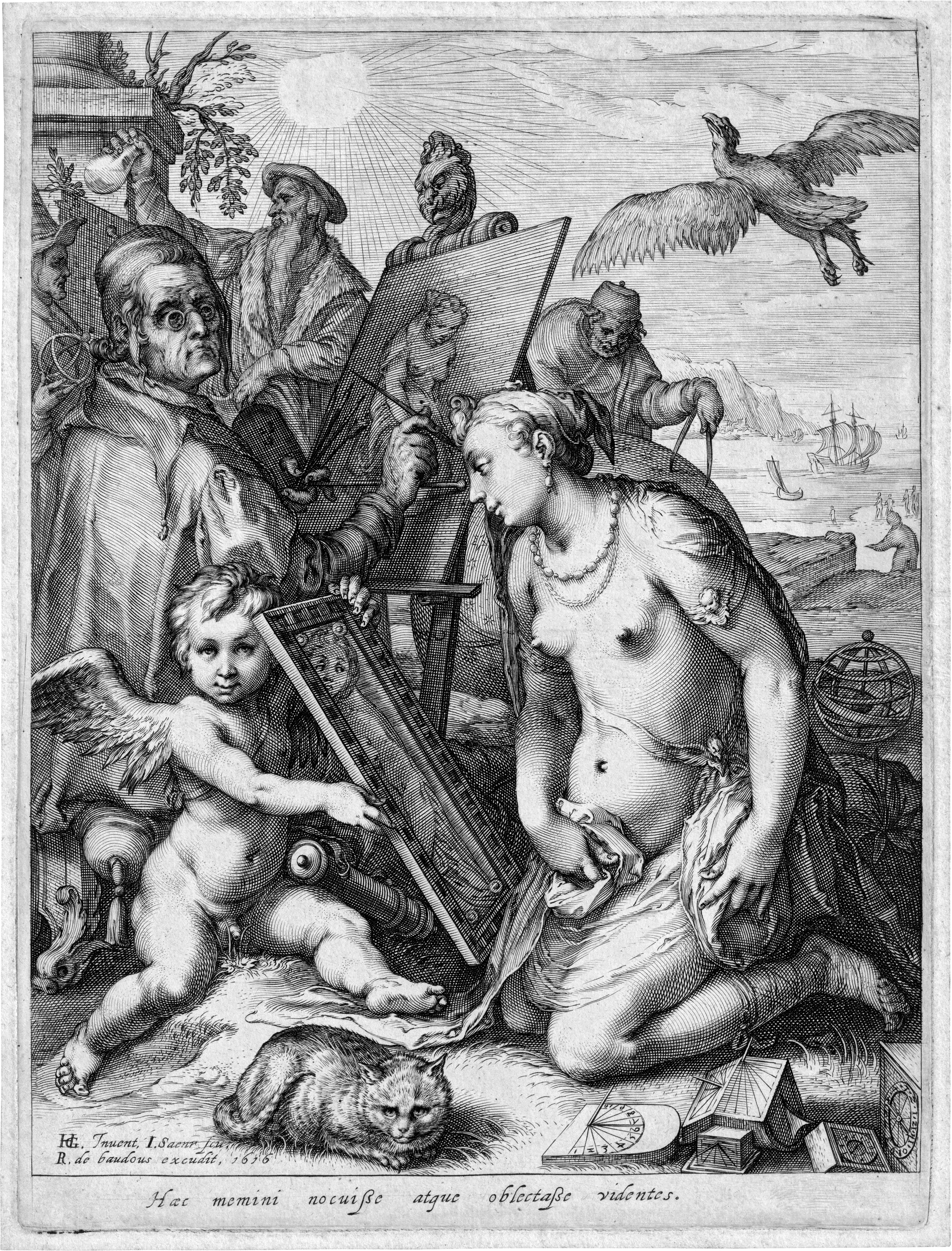Loading the page ...
Jan Saenredam
(circa 1565 Zaandam – 1607 Assendelft)
Allegory of Love, Sight and Art. Engraving after Hendrick Goltzius. 24.4 x 18.4 cm. Circa 1598. Bartsch 100, Hollstein 106 II (of III), Leesberg (New Hollstein, Goltzius) 716 II (of III). Watermark: Basle crozier.
The Allegory of Love, Sight and Art, a highly complex composition overflowing with symbols and attributes, can rightly be regarded as one of the main works of Haarlem Mannerism that emerged under the leadership of Hendrick Goltzius and his associates. One of the artist’s pupils, Jan Saenredam, engraved the image around 1598, probably after a drawing by the master, but it was not until 1616 that it was published by Robert Willem de Baudous. The artist uses manifold signs and allusions to make visual perception the focus of the work. A special role is played here by painting, represented in the centre of the picture by an artist and his model, a naked Venus, who contemplates her own image in a mirror held by a seated Cupid. The spectacled painter concentrates his gaze on the beautiful, bejewelled woman even as he immortalises her on the canvas. The allegory “connects the noblest of the five senses with one of its supreme testimonies: painting, the essence of which is revealed only to the sense of sight.” (exhibition catalogue Maler und Modell, Staatliche Kunsthalle Baden-Baden, 1969, no. 17). Present in the background are various representatives of the sciences holding optical instruments – two astronomers and a doctor in the process of examining a phial. Scattered around the scene are other pieces of equipment, such as sundials, a telescope and a celestial sphere. An eagle in the sky flies towards the sun, while in the foreground the gaze of a reclining cat meets that of the beholder. Common to both animals are their extremely sharp eyes. At the same time there are contradictory symbolisms to be found in the scene – in the glasses, for example, which refer both to an optimisation of the visual process and to a visual impairment – as well as numerous references to contemporary scientific and cultural discourses. Given the complexity of the content, this work and its interpretation were clearly the preserve of connoisseurs.
Saenredam’s engraving of Goltzius’ no longer extant original shows the artist’s customary technical brilliance. A superb, extremely nuanced impression with delicate plate tone and even thread margins around the distinct platemark. Minor ageing and traces of handling, otherwise in impeccable, pristine condition.
Contact us for further information